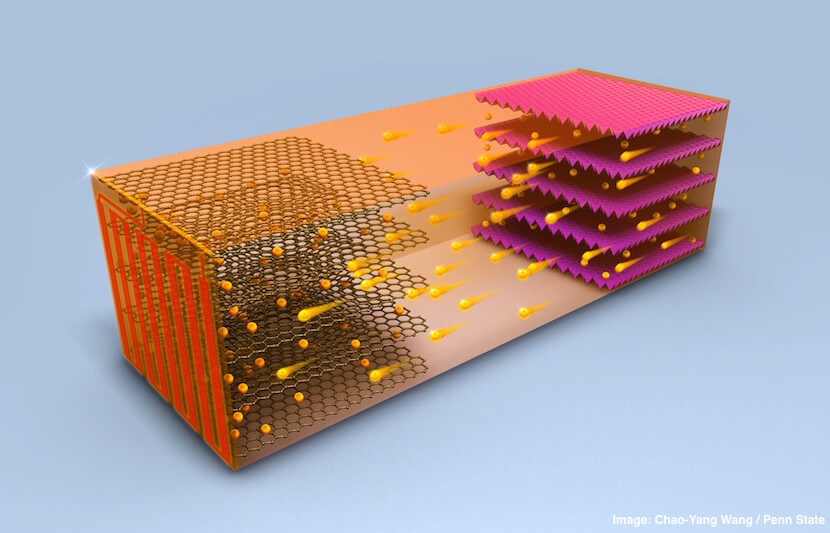Penn State researchers have developed a self-heating car battery, capable of being rapidly charged in cold temperatures.
This is a significant development since the weather is one of the biggest barriers that electric car companies face, and it could inspire more people living in cold-weather states, outside of sunny California, to purchase electric vehicles.
Traditionally, temperatures below 50 degrees Fahrenheit slow down the speed in which lithium-ion batteries can charge and contribute to battery degradation, making people hesitant to take electric vehicles far distances from their homes.
“Electric vehicles are popular on the west coast because the weather is conducive,” Xiao-Guang Yang, an assistant research professor in mechanical engineering at Penn State and co-author of the study, said in a statement.
“Once you move them to the east coast or Canada, then there is a tremendous issue. We demonstrated that the batteries can be rapidly charged independently of outside temperature.”
This new battery can be charged to 80 percent in 15 minutes, anywhere, anytime. It is even capable of rapid charging at minus 40 degrees Fahrenheit.
“Time is money! No one wants to wait around for hours to get electric cars or smartphones charged,” said Chao-Yang Wang, a professor and Diefenderfer Chair of mechanical and nuclear engineering at Penn State and co-author of the study.
In traditional lithium-ion batteries, fast charging is only possible in warm weather because the heat enables the batteries to be reactive to high rates of electrical currents.
In cold weather, however, charging currents have to slow down to avoid making lithium metal dendrites that can cause damage to the battery life and is a safety hazard, said Wang.
“To change this, we came up with an idea to use the electrical energy from a charger to rapidly warm up a cold battery first before fast charging,” said Wang. “As a result, we invented a battery with dual functions of energy storage and instant self-warming.”
How it works
In previous work, the researchers developed a battery that can avoid below-freezing power drainage by self-heating.
They applied the same principles in this development.
Batteries have two terminals, a positive and a negative. In this project, the researchers attached thin nickel foil to the negative end to create a third terminal. When it drops below room temperature, a sensor attached to a switch sends electrons through the nickel foil. This rapidly heats up the foil and warms up the battery.
When the battery gets back to above room temperature, the switch opens so that the electric current flows into the battery and quickly charges it. “One unique features of our cell is that it will do the heating and then switch to charging automatically,” Wang said in a statement. “Also, the stations already out there do not have to be changed. Control off (sic) heating and charging is within the battery, not the chargers.”
A paper describing the battery is published in the journal Proceedings of the National Academy of Sciences.
Testing the battery
Through testing, the researchers found that their battery could withstand 4,500 cycles of 15-minute-long charging sessions at 32 degrees Fahrenheit with only 20-percent capacity loss.
This equates to 280,000 miles of driving and a 12.5-year lifetime.
This is exceptionally impressive because all batteries are known to degrade over time, and the life of these batteries would allow for a vehicle life-span longer than most warranties.
Conventional batteries that went through the same test lost 20-percent capacity in 50 charging cycles.
“It removes the temperature restriction for battery fast charging for good,” said Wang. “Imagine that it is now possible for AAA to fast charge a stranded electric vehicle with empty battery in the cold. What about fast charging an electric truck in the winter which is too big to park in a heated garage like Tesla cars?”
What’s next?
The technology is already being implemented into commercial vehicles. BMW recently signed a deal that gives them access to the batteries.
Wang expects to see the technology in vehicles on the market in 3-5 years.
Additionally, the technology will be used in the next Winter Olympics.
“I also expect our technology to be used for fast charging of smartphones and drones in the cold,” said Wang.



